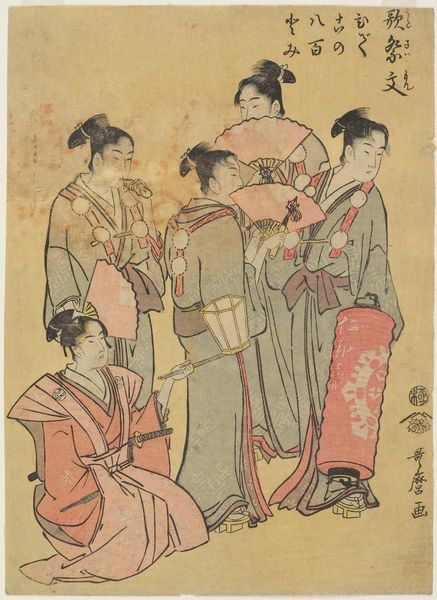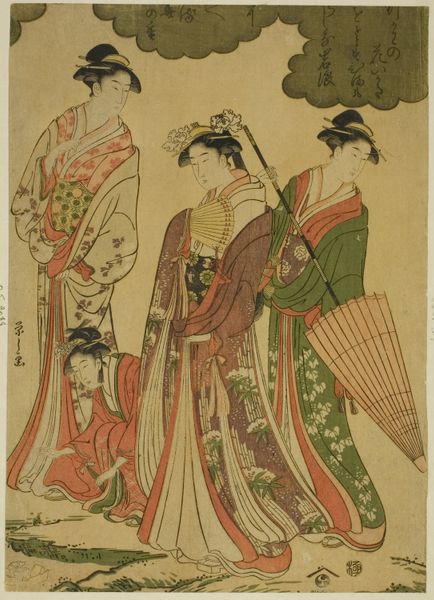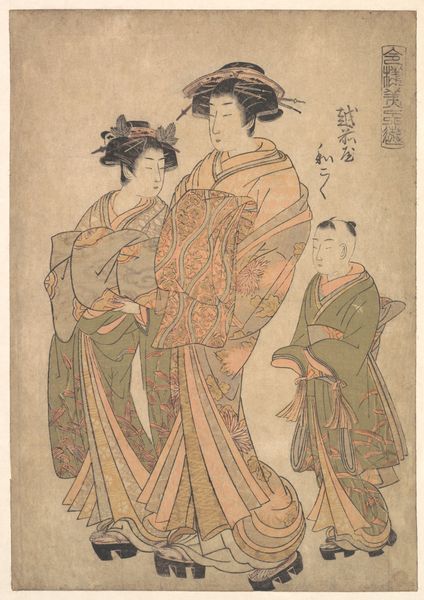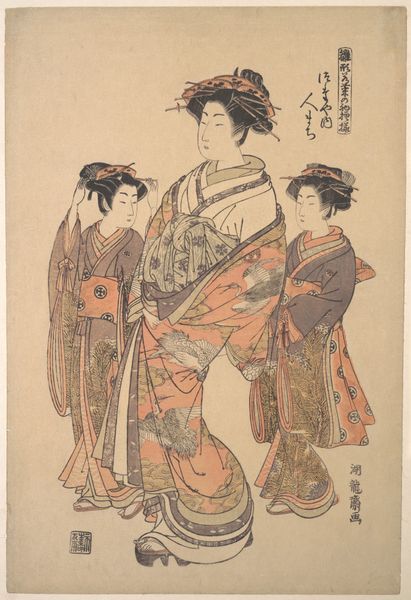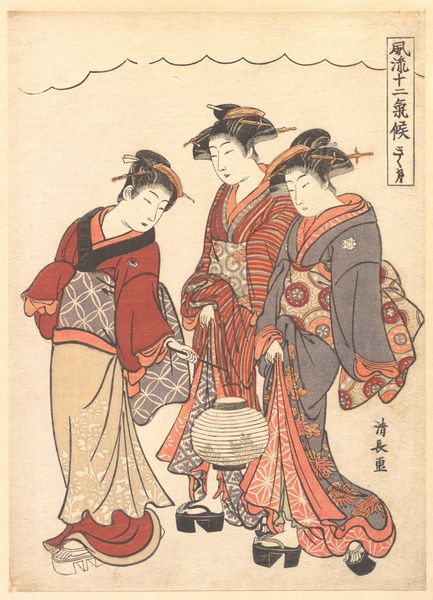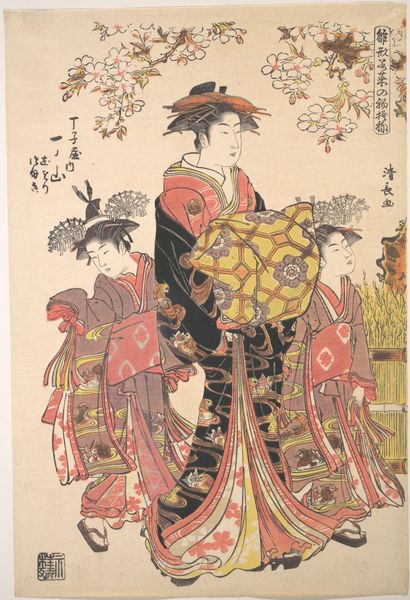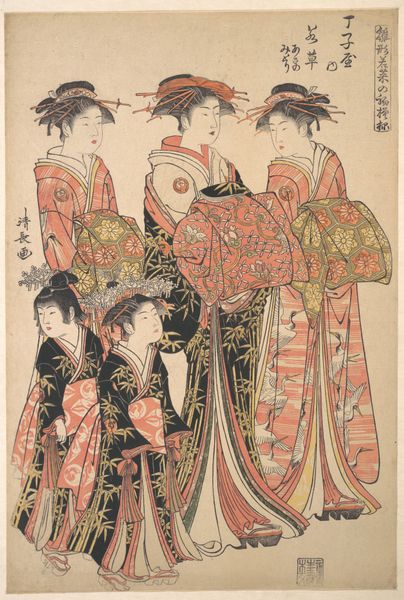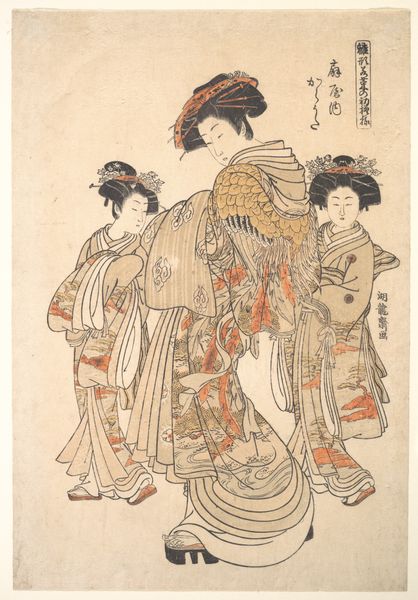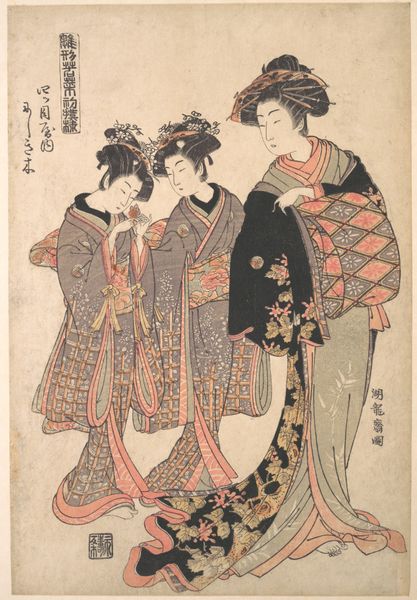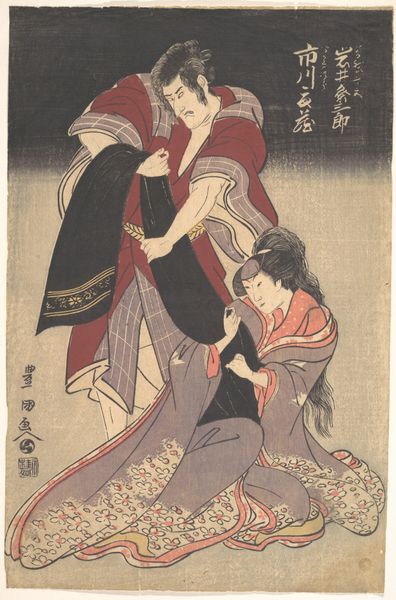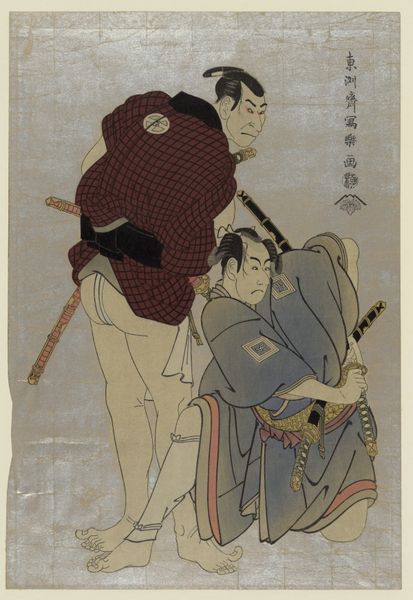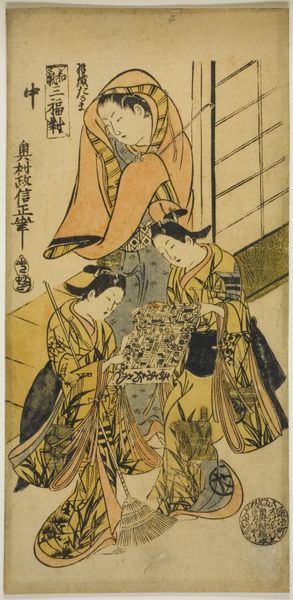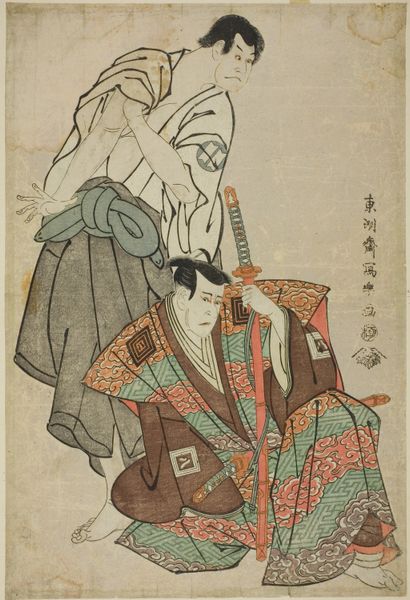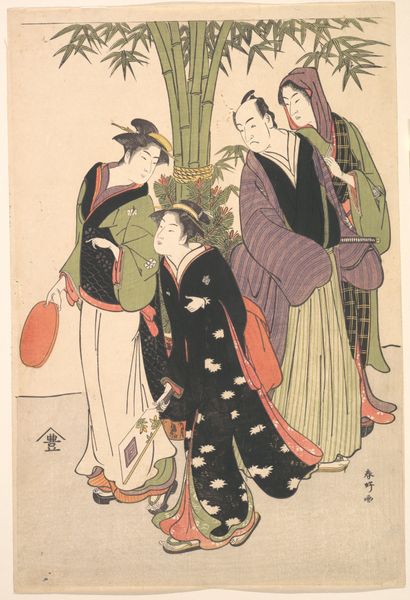
print, woodblock-print
# print
#
asian-art
#
ukiyo-e
#
figuration
#
woodblock-print
#
genre-painting
Dimensions: 13 x 8 3/4 in. (33 x 22.2 cm)
Copyright: Public Domain
Curator: Here we have a woodblock print titled "End of the Year" created between 1615 and 1868 by Eishōsai Chōki. It's currently housed at the Metropolitan Museum of Art. What are your initial thoughts? Editor: There's a real sense of contained energy in this print. The figures are grouped closely together, and while their expressions seem almost melancholic, there's a strong underlying visual rhythm in their clothing and the goods they're carrying. Curator: It is a very thoughtful composition. From a materialist perspective, these figures likely represent participants in a year-end market, maybe merchants or servants making deliveries. Woodblock printing was, after all, a method for producing art accessible to the wider population and served multiple purposes from entertainment to communication. Editor: I can see that. The way Chōki uses line, though—look at the precision in the outlines of their robes and the deliberate patterns within them! There's a formalism at play which serves to structure the composition, guiding the eye. Consider also how the patterns contrast each other, creating visual depth and activating the surface. Curator: But these patterns were laboriously carved and printed, speaking volumes about the means of production. How was the print distributed, who had access, and how was it perceived in a rapidly urbanizing Edo period society? What meanings did these consumer goods carry, particularly as status symbols or everyday necessities? Editor: Precisely. Think about how the figures interact with the geometric planes within their outfits. Their clothes are almost architectural elements—their relationship is vital to understand the artwork as an aesthetic system. Curator: But consider what the textiles were composed of. Where did these goods come from? The dyes for the cloth... the social and economic status signified through the fabrics, these are crucial considerations, enriching the scene beyond the figures' expressions or the mere technique. Editor: An important question! However, the balanced arrangement allows me to understand the function of signs. A deep, internal network between them that points to cultural codes operating, perhaps. Curator: Thinking about the networks this artwork was involved with reveals not only the image of elegance, but the materiality of work and commercial exchange embedded within its lines and form. I think it offers a crucial view into cultural processes. Editor: A fitting way to see "End of the Year". This consideration of craft techniques reminds me of how its lines articulate form to explore that tension in our closing view.
Comments
No comments
Be the first to comment and join the conversation on the ultimate creative platform.
